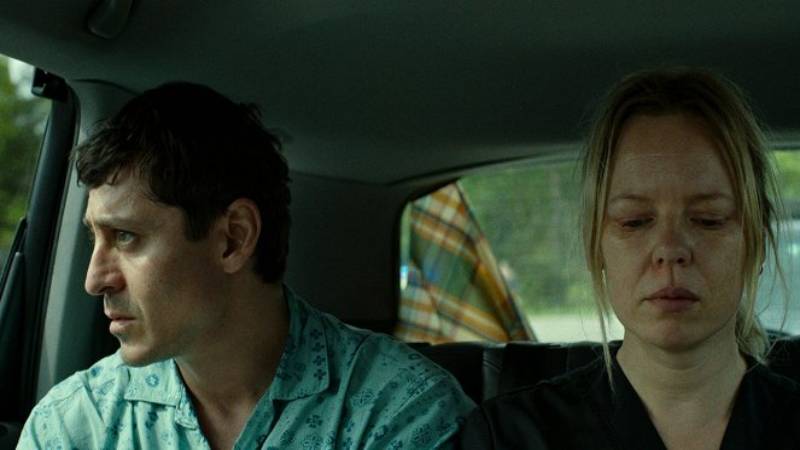Now on its 31st edition, and with a history of three decades showcasing “the best of Independent Cinema at the heart of London”, Raindance has decided to return to its roots, with an almost exclusive focus on debutant filmmakers. Seventy-five percent of movies showcased this year are made by first-time directors, the figure reaching nearly 90% once second and third features are added. The Festival describes itself as a place to “discover and be discovered”.
The action takes place from October 25th to November 4th. The Central London venues include the Vue Piccadilly, Curzon Soho, Curzon Mayfair and the Garden Cinema, with The House of Raindance industry hub and the Raindance Immersive VR Showcase hosted this year at Wonderville on Haymarket (near Piccadilly Circus). Gala projections and parties take place at the glamorous Waldorf Hilton, in Covent Garden. Raindance founder Elliot Grove explains: “We are wholeheartedly back in London’s West End, the beating heart of cinema in the UK. And we will continue to champion new filmmakers and the edgy, under-the-radar films that we at Raindance love so much”. Further screenings will be held at Genesis Cinema, in East London
We asked Raindance’s Artistic Directors Malaika Bova and Martyna Szmytkowska more about their decision to focus on new directors, how this affected the structure of their programme, and whether being a first-time filmmaker really makes you more prone to risk-taking.
You can book your tickets for Raindance and find out more by clicking here.
…
.
DMovies – Raindance has decided to focus almost exclusively on first and second features this year, in line with your “discover and be discovered” proposition. How did this decision come about?
Malaika Bova – “When we were first appointed Artistic Directors [last year] we thought long and hard about Raindance’s identity but also about its unique selling point within the world of UK festivals and the wider industry. We realised we were stepping into a precious legacy of championing not only indie but also new voices in filmmaking, and we decided to go back to our roots and focus our research on bringing to light first-time films and filmmakers. There’s a wealth of debuts out there looking for a place to shine. And sometimes more prestigious festivals are not exactly the right place for them to be on the forefront of the line-up. We are.
DM – And how does that affect the breadth and the depth of your programme?
Martyna Szmytkowska – Once we decided what the Raindance platform was about, it was surprisingly easy to populate it with the right content. We put ourselves in a position to research and find debuts before they manage to catch the industry attention, or if they have it already we offer our support to promote them. So in fact we have been spoilt for choice and had to make hard decisions to create a coherent programme, which we feel is stronger and has more identity as a final result. Out of 37 feature films we have 29 first and two second features. We managed to consciously build almost an entire programme around the “discover and be discovered” motto, including the Opening Night film, a debut feature by Jack Huston, Day of the Fight. Additionally we made a very compact selection to ensure each individual first-time filmmaker was properly taken care of and supported by the whole team.
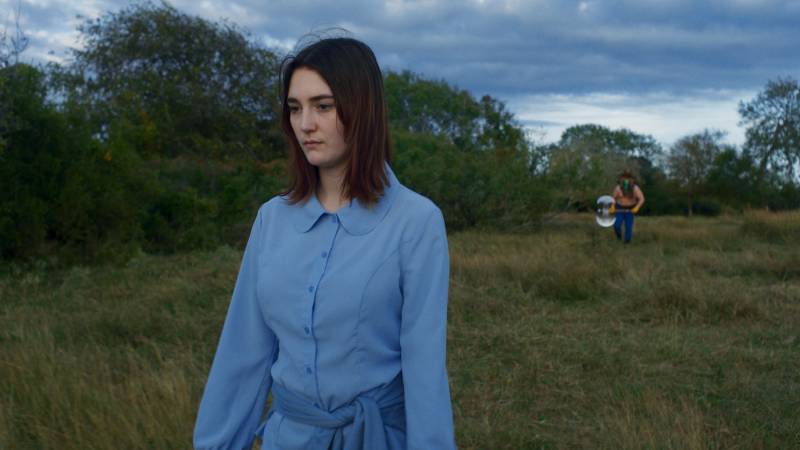
DM – The focus on nascent director isn’t something entirely new, but instead a “return to the roots”. Could you please tell us more about that?
MB – We are definitely returning to the roots with the idea of championing first-time filmmakers but this time we wanted it to be crystal clear. So we have come up with a to-the-bone programme structure that emphasises our attention to new voices. We have devised four simple competitive sections that highlight our main objectives: Best UK Features, as we are a UK festival with a large network of home-grown filmmakers; Best Documentary Features as we always want to follow the current topics and because many first time filmmakers venture into filmmaking through documentaries; Best International Features because it allows us to bring to the London audience a more diverse and multicultural offering; and last but definitely not least the Discovery Award for the first time filmmakers with a strong vision, whose films have already travelled or we believe will be picked up by the festival circuit.
DM – Does “nascent” mean “audacious”? In other words, do debutant directors tend to take more risks than established ones?
MS – We believe most times they do. Before they enter the market circuit they have more to prove and less to lose and therefore are inclined to make bolder choices. But it is also very important for us that these choices are relevant for an audience and do communicate something to viewers. That they have a strong story that resonates with many even if their tools of expression may be unconventional and controversial. So, yes, we like audacious. Like Mountain Onion a Biennale College project by Eldar Shibanov, a Wes Anderson-esque film from Kazakhstan or Only The Good Survive by Dutch Southern, a genre-bending gory horror comedy.
.
The programme
Opening Gala
Day of the Fight (Jack Huston):
UK Premiere. Debut feature. Award-winning British actor Jack Huston (Boardwalk Empire, American Hustle, House of Gucci) makes his directorial debut with this story of a once-renowned boxer who takes a redemptive journey through his past and present, on the day of his first fight since he left prison. This formidable drama stars Michael Pitt alongside a cast including Ron Perlman, Joe Pesci, and a cameo from Steve Buscemi. Director Jack Huston will take part in a post-screening Q&A, followed by a gala opening party at the Waldorf Hilton.
Closing Gala
Un Amor (dir Isabel Coixet):
Based on Sara Mesa’s bestselling novel, award-winning actress Laia Costa (nominated for the 2017 BAFTA EE Rising Star award for Victoria) plays a young woman who escapes her stressful life in the city and relocates to rural Spain. When she accepts a disturbing sexual proposal, it gives rise to an all-consuming and obsessive passion. Nominated for the Golden Seashell at San Sebastián Film Festival, it’s a striking account of existential doubt and the transformative power of carnal desire.
.
Special guest focus: Catalonia
Raindance is honoured to welcome Catalonia as the special guest this year. Closing gala Un Amor is presented as part of this special focus in partnership with Catalan Films, along with the UK Premieres of Upon Entry, Tender Metalheads and La Singla (more details below). A dedicated Shorts Programme will further showcase the vision, ambition, and vibrancy of Catalan filmmakers. Special sessions during Raindance’s Industry Programme will also champion Catalonia’s film industry.
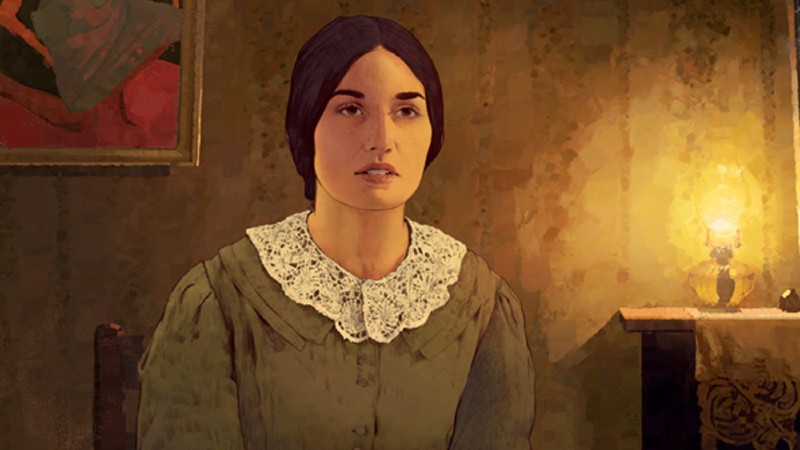
.
In Competition: Discovery
1. Parachute (Britanny Snow)
The directorial debut by actress Brittany Snow won her the Thunderbird Rising award at SXSW. Lead actress Courtney Eaton also picked up a prize at SXSW for her powerful performance as a young woman with an eating disorder and addiction issues.
2. All the Colours of the World are Between Black and White (Babatunde Apalowo):
Winner of the Best Feature Teddy at Berlin, it portrays two men who develop a deep affection for each other when they first meet in Lagos – but in a society which considers homosexuality taboo, they feel the pressure of social norms.
3. Upon Entry (Alejandro Rojas, Sebastián Vasquez):
Acclaimed at festivals including Málaga and Tallinn, it follows a young couple as they move from Spain to the United States, only to face an unpleasant inspection and gruelling interrogation when they enter New York airport’s immigration area.
Read our exclusive review of Upon Entry here. This pieces was written during the Tallinn Black Nights Film Festival (where the movie world premiered last November).
5. Only the Good Survive (Dutch Southern):
Multi-award-winning actress Sidney Flanigan plays a young woman who, after a heist gone wrong results in the deaths of three of her friends, finds herself in the custody of the small town sheriff in this impressive horror/thriller.
6. Mountain Onion (Eldar Shibanov):
This Venice Film Festival prize-winner follows an 11-year-old boy who finds his mother with a truck driver, and so he travels from Kazakhstan to China to find what he believes is the only thing that can help his father save the situation and become a strong man: Gold Viagra.
7. Lost Soulz (Katherine Propper):
A young rapper leaves everything behind and embarks on an odyssey of self-discovery, music, and friendship in this slow-burning Texas-bound road btrip movie.
8. Storm (Erika Calmeyer):
After her son drowns in an accident, a mother tries to restart her and her daughter’s life in this tough and powerful drama – only for rumours to surface that the daughter pushed her brother into the water.
9. The Land Within (Fisnik Maxville):
This Kosovan-Swiss production was the Best First Feature winner at Tallinn. It follows an adopted boy living in Switzerland who returns to his native Kosovo at the request of his cousin, to help identify the exhumed bodies from a mass grave in their childhood village. Lead actress Luàna Bajrami won the Raindance 2021“Best Director award for her directorial debut The Hill Where Lionesses Roar.
Read our review of The Land Within, also originally written in Tallinn.
.
In Competition – International
1. All the Silence (Diego del Rio):
An actress and sign language teacher learns that she is soon to become deaf. Despite having deaf parents, deaf friends, and a deaf girlfriend, she refuses to accept a world without sound.
2. Blood for Dust (Rob Balckurst):
With a cast including Kit Harington, Josh Lucas and Stephen Dorff, it tells of a struggling travelling salesman who finds himself on a dangerous path after a chance encounter with a former colleague.
3. Clashing Differences (Merle Grimme):
Winner of the Young German Cinema award at Munich Film Festival, the all-female cast tell the story of a white feminist organisation who, in a clumsy attempt at diversity, invite a group of queer and BIPOC women to participate in their conference.
Read our exclusive review of Clashing Differences, written during the Munich Film Festival.
4. Tender Metalheads (Joan Tomas):
A Catalonian animated tale of two teenage boys in 1990s Barcelona who take refuge in their friendship and heavy music, escaping the grey world in which they live.
5. Palimpsest (Hanna Västinsalo):
From the Venice Film Fest Biennale Cinema College, this Benjamin Button-esque sci-fi drama follows two elderly roommates who are selected for a medical trial that makes them younger, giving them a second chance at life while retaining the memories of their past life.
6. Pett Kata Shaw (Nuhash Humayun):
Having directed the multi-Oscar® qualifying horror short Moshari (2022), this self-taught filmmaker brings more ancient South Asian folklores to life in this supernatural anthology film – perfect viewing for Halloween.
7. Sweet Sixteen (Alexa-Jeanne Dubé):
Adapted from the late Suzie Bastien’s 2018 play, eight 16-year-old girls unveil themselves through eight bittersweet monologues.
8. White Plastic Sky (Tibor Bánóczki, Sarolta Szabó):
This bold and visually striking animated film follows a young couple living in a barren, post-apocalyptic Budapest in the year 2123, struggling for food and life as they survive along with the rest of humanity beneath a huge white dome.
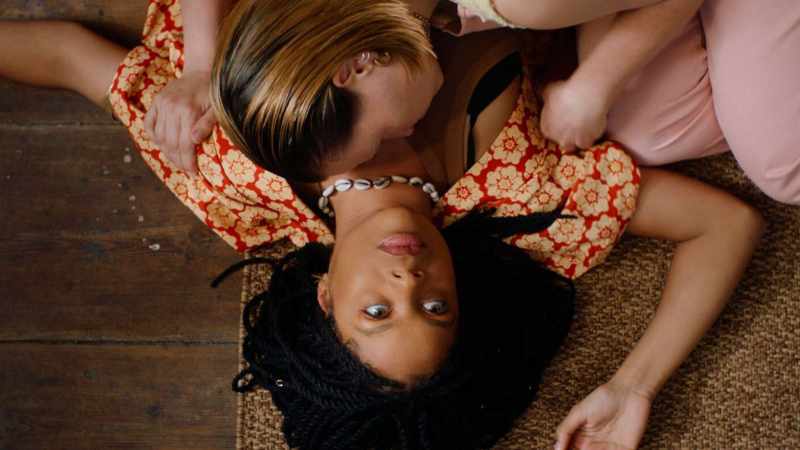
.
In Competition: Documentaries
1. Satan Wants You (Steven J. Adams, Sean Horlor):
The provocative story of how the “Satanic Panic” of the 1980s was ignited by Michelle Remembers, a bestselling memoir co-written by a psychiatrist and his patient, which made lurid claims about Satanic ritual abuse.
2. Dusty & Stones (Jesse Rudoy):
This remarkable debut intimately chronicles the ride of Gazi “Dusty” Simelane and Linda “Stones” Msibi, two struggling country music singers from Swaziland who journey to Texas hoping for their big break.
3. Sex with Sue (Lisa Rideout):
Winner of Best Documentary at the Canadian Screen Awards 2023, it chronicles the life of nurse-turned-sex-educator Sue Johanson, whose popular radio and TV programmes offered sex education from a pleasure-driven, feminist perspective.
4. La Singla (Paloma Zapata):
Romani flamenco dancer Antoñita Singla lost her hearing just days after her birth, so learned to dance by watching her mother clapping. In the 1960s she was considered “the best flamenco dancer in the world” – but ironically, she was more famous internationally than in Spain. This is her fascinating life story.
5. We are Guardians (Chelsea Green, Rob Grobman, Edivan Guajajara):
Produced by Leonardo DiCaprio’s Appian Way Productions, this is a poignant portrayal of a group of native people who endeavour to save what is left of the Brazilian Amazon.
6. Another Body (Sophie Compton, Reuben Hamlyn):
Winner of the Special Jury Award at SXSW, it documents a college student’s search for justice after she discovers deepfake pornography of herself circulating online.
7. Aurora’s Sunrise (Inna Sahakyan):
Combining archive footage with animation to tell the true story of a teenage refugee turned Hollywood star: 14-year-old Aurora lost everything during the Armenian Genocide, but after fleeing to New York her story became a media sensation, leading to a starring role as herself in the 1919 film Auction of Souls (Oscar Apfel).
This is our verdict of Aurora’s Sunrise, which premiered last November at the Tallinn Black Nights Film Festival.
8. Omar and Cedric (Nicolas Jack Davies):
Having worked with the likes of Coldplay, Elbow, PJ Harvey and Mumford & Sons, this Grammy-nominated director charts the intimate, artistic and personal relationship between Omar Rodriguez-López and Cedric Bixler-Zavala of American progressive rock band The Mars Volta.
9. The Books He Didn’t Burn (Claus Bredenbrock & Jascha Hannover):
Narrated by Academy Award winner Jeremy Irons, this documentary takes an eye-opening look at history by examining the remains of Adolf Hitler’s private library.
.
In Competition: UK
1. Long Distance Swimmer (Charly Wai Feldman, UK):
When former pro swimmers Sara Mardini and her sister Yusra arrived in Germany from war-torn Syria, they were Europe’s most celebrated refugees. Now Sara is facing a 20-year prison sentence for volunteering with a Greek NGO, helping other refugees. Screening in association with Migration Matters Festival.
2. Sisters Interrupted (Caroline Sharp):
Highlighting the medical injustices that people face, this documentary follows two sisters as they both battle forms of epilepsy and together fight for access to a treatment that could save both their lives.
3. Red Herring (Kit Vincent):
Tackling themes of mental health, love and society, a filmmaker enlists his family on an intimate and darkly humorous journey to help them come to terms with his terminal illness.
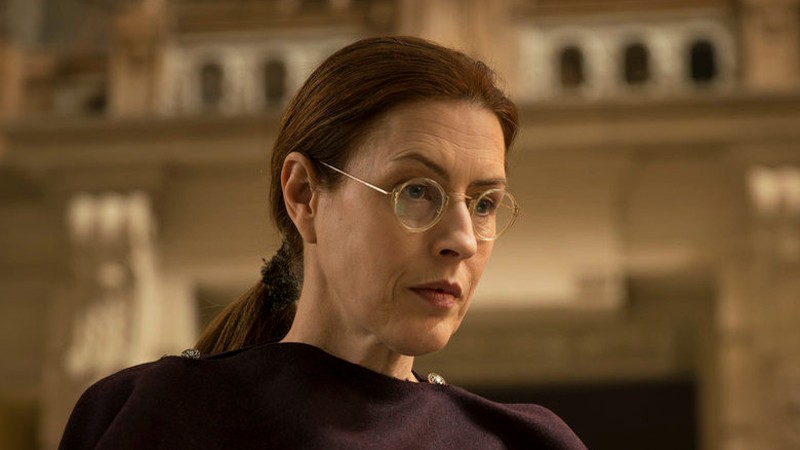
4. Embers (Christian Cooke):
The first feature by British actor Christian Cooke, he also stars alongside a cast including Ruth Bradley (Humans, Ted Lasso) in this story of a sexual surrogate who is employed to help a high-security psychiatric patient overcome his intimacy issues so he can make parole.
5. Silent Roar (Johnny Barrington):
Chosen to open this year’s Edinburgh Film Festival, this charming coming-of-age drama follows a young surfer on the Isle of Lewis as he deals with unresolved grief following his father’s death.
6. The Portrait (Simon Ross):
European Premiere. Debut feature. After her husband is devastated by a tragic accident, a devoted wife becomes obsessed with a mysterious portrait that resembles how he once was. This eerie thriller stars Natalia Cordova-Buckley, Ryan Kwanten and Oscar nominee Virginia Madsen.
7. Catching Dust (Stuart Gatt):
Erin Moriaty and Jai Courtney play a woman and her criminal husband who are hiding out in Texas, when a couple from New York suddenly arrive resulting in dangerous consequences.
8. Warhol (Adam Ethan Crow):
The lives of a controversial America shock jock, a desperate deaf girl, a homeless ex-soldier, and a scared young gang member intertwine in this tale of choice, consequence, and redemption.
.
Off-Competition:
1. Restore Point (Robert Hloz):
Special Critics Pick selected by Variety’s Guy Lodge. Set in 2038, a female detective investigates the case of a murdered couple when a restoration team is able to bring one of them back to life.
2.To be confirmed:
Special Critics Pick selected by Screen International’s Finn Halligan.
3. Typist, Artist, Pirate, King (Carol Morley):
Kelly Macdonald and Monica Dolan play two women whose friendship grows as they hit the road in an electric car looking for endings and reconciliation. Co-starring Gina McKee.
Read our review of Typist Artist Pirate King here, written in Tallinn.
You can book your tickets for Raindance and find out more by clicking here.
The images on this article are stills from Mountain Onion, Only the Good Survive, Aurora’s Sunrise, Clashing Differences, and Typist, Artist, Pirate, King (top to bottom).









